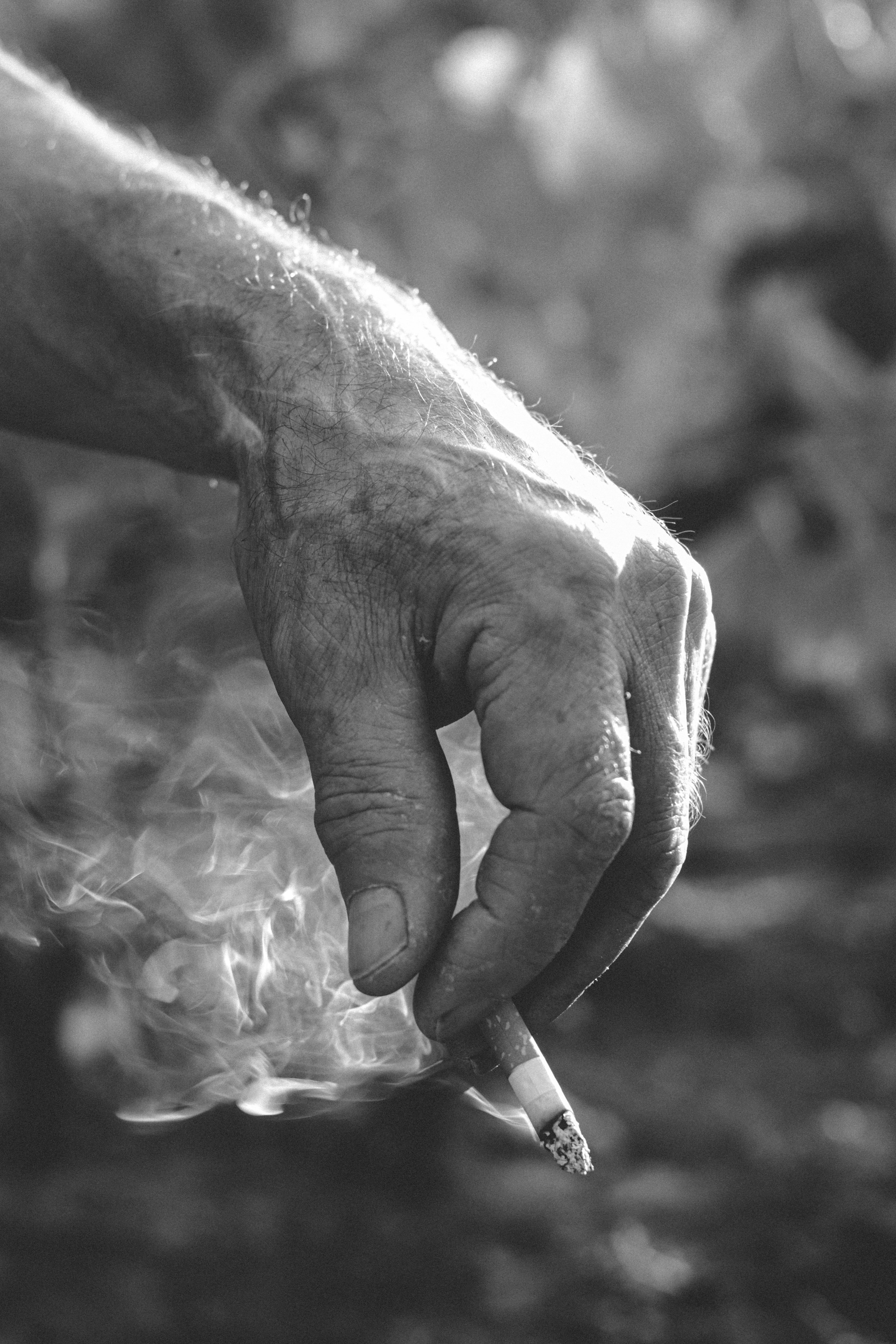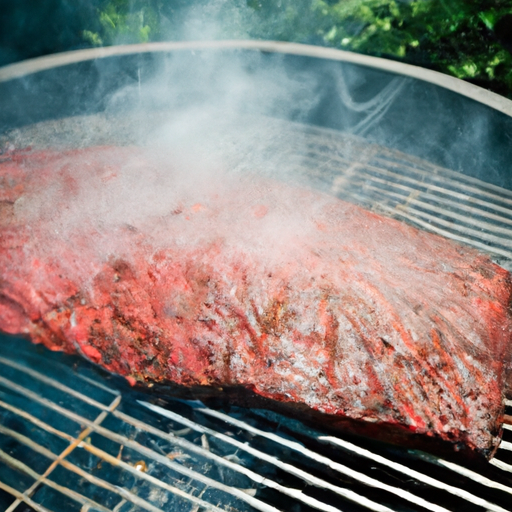Ready to level up your BBQ game? Look no further than “A Guide To BBQ Smoking: Techniques And Recipes.” Packed with expert tips, step-by-step instructions, and mouthwatering recipes, this guide is your key to becoming a master of the grill. Whether you’re a seasoned pro or just starting out, Tastepan.com has your back with a treasure trove of classic comfort food and exotic international dishes. Get ready to tantalize your taste buds and impress your friends and family with the ultimate BBQ experience. Let’s fire up those grills and get smokin’!

Smoking Techniques
Smoking is a popular cooking method that infuses meats and other ingredients with a rich and smoky flavor. Whether you’re a seasoned BBQ enthusiast or just starting out, mastering smoking techniques can take your culinary skills to the next level. In this comprehensive guide, we’ll explore the different aspects of smoking, from choosing the right wood to monitoring cooking time, and provide you with delicious recipes to try along the way. So grab your smoker and let’s get started!
Choosing the Right Wood
When it comes to smoking, choosing the right wood is essential as it greatly influences the flavor profile of your dish. Different types of wood impart distinct flavors, ranging from subtle to bold. Here’s an overview of some common wood types used in smoking:
-
Oak: This versatile wood is a classic choice for smoking. It offers a mild and balanced flavor that pairs well with various meats.
-
Hickory: Known for its strong and smoky taste, hickory wood adds a robust flavor to meats like pork and beef. It’s popular in traditional barbecue recipes.
-
Apple: If you’re looking for a sweeter and fruity taste, applewood is an excellent choice. It complements poultry and pork dishes beautifully.
-
Mesquite: For a bold and intense flavor, mesquite wood is a popular option. It’s commonly used in Southwestern and Tex-Mex cuisines, adding a distinct smoky taste to meats.
-
Cherry: Cherrywood provides a mild and slightly sweet flavor, making it suitable for a range of meats. It adds a subtle fruity note to your dishes.
When choosing the right wood, consider the type of meat you’re smoking and the flavor profile you want to achieve. Experimenting with different wood combinations can also yield exciting results. Just make sure to avoid toxic wood varieties, such as pine or cedar, as they can release harmful chemicals when burned.
Prepping the Meat
Before you start smoking, proper preparation of the meat is crucial to ensure optimal results. Here are some key steps to follow when prepping your meat:
-
Choosing the Ideal Cuts for Smoking: Certain cuts of meat, like ribs, brisket, and pork shoulder, are particularly well-suited for smoking due to their higher fat content. These cuts benefit from the slow and gentle cooking process, resulting in tender and flavorful results.
-
Trimming and Seasoning the Meat: Trim any excess fat from the meat, as too much fat can lead to flare-ups and an unpleasant taste. Season the meat generously with a dry rub or marinade to enhance its flavor. Let the meat sit for at least an hour, or overnight for a more intense flavor.
-
Brining and Marinating Techniques: Brining is a process of soaking the meat in a solution of salt, sugar, and water. It helps to tenderize the meat and add moisture. Marinating, on the other hand, involves soaking the meat in a flavorful mixture of herbs, spices, and liquids. Both techniques can greatly enhance the flavor and texture of your smoked meats.
-
Dry Rubs and Mop Sauces: Dry rubs are mixtures of salt, spices, herbs, and other seasonings that are rubbed onto the meat’s surface before smoking. They create a flavorful crust and add complexity to the final dish. Mop sauces, on the other hand, are thin sauces that are periodically brushed onto the meat during smoking to keep it moist and add flavor.
-
Injecting Flavors into the Meat: For an extra burst of flavor, consider injecting marinades or brine directly into the meat. This technique is particularly useful for larger cuts of meat like whole turkey or pork loin. Use a meat injector to distribute the liquids evenly throughout the meat.
By following these steps, you’ll be on your way to preparing delicious and succulent meat that’s ready for the smoking process.
Setting Up the Smoker
Once your meat is prepped and ready, it’s time to set up your smoker. Depending on your preference and equipment, there are several types of smokers to choose from:
-
Offset Smokers: These traditional smokers feature a separate firebox where the charcoal and wood are burned, and the smoke is drawn into the main cooking chamber. Offset smokers offer excellent heat control and produce authentic smoke flavor.
-
Vertical Smokers: Also known as bullet smokers, these compact smokers consist of a charcoal chamber at the bottom and a cooking chamber above it. They are easy to use and provide consistent heat distribution.
-
Electric Smokers: Electric smokers are user-friendly and convenient, as they rely on electricity to generate heat and smoke. They are ideal for beginners or those who prefer a hands-off approach to smoking.
-
Pellet Smokers: Pellet smokers use wood pellets as their fuel source. They automatically feed the pellets into a combustion chamber, providing consistent heat and smoke. They offer great temperature control and are suitable for both low and high-temperature smoking.
Whichever type of smoker you choose, it’s important to prepare it properly before using:
-
Cleaning and Seasoning: Start by thoroughly cleaning the inside of the smoker, removing any residue or debris. Follow the manufacturer’s instructions for seasoning the smoker, which involves coating the interior with cooking oil and allowing it to heat up for a period of time. Seasoning helps prevent rust and prepares the smoker for optimal performance.
-
Charcoal vs. Gas: Consider whether you prefer the flavor of charcoal or the convenience of gas for fueling your smoker. Charcoal provides a distinct smoky flavor, while gas offers ease of use and precise temperature control.
-
Using Wood Chips, Chunks, or Pellets: If you’re using a charcoal or gas smoker, you’ll need to add wood chips, chunks, or pellets to create the smoke. Soak wood chips in water for at least 30 minutes before use to prevent them from burning too quickly. Experiment with different wood flavors to find the perfect combination for your taste preferences.
-
Optimizing Airflow and Ventilation: Proper airflow is essential for maintaining a steady temperature and ensuring the smoke circulates evenly around the meat. Adjust the vents on your smoker to control the airflow and maintain the desired temperature. A good rule of thumb is low and slow – aim for a temperature of around 225-250°F (107-121°C) for most smoking recipes.
By setting up your smoker correctly, you’ll create the optimal environment for smoking your meats and achieving delicious results.
Controlling the Temperature
Temperature control is key to successful smoking. Consistency in temperature ensures that the meat cooks evenly and achieves the desired texture and flavor. Here are some tips for controlling the temperature in your smoker:
-
The Importance of Temperature Control: Maintaining a consistent temperature throughout the smoking process is crucial for achieving the best results. Fluctuations in temperature can lead to undercooked or overcooked meat. Invest in a reliable thermometer to monitor the temperature accurately.
-
Using Water Pans and Drip Trays: Placing a water pan in your smoker helps regulate the temperature by providing moisture and stabilizing the heat. It also helps maintain the meat’s juiciness and prevents it from drying out. Additionally, using a drip tray underneath the cooking grates catches excess fat and prevents flare-ups.
-
Methods for Heat Regulation: Depending on your smoker, there are a few methods you can use to regulate the heat. For charcoal smokers, adjust the vents to control the airflow and the amount of oxygen reaching the coals. For electric or pellet smokers, adjust the temperature settings according to your recipe’s requirements.
-
Using Thermometers and Probes: A reliable meat thermometer is essential for monitoring the internal temperature of the meat. Insert the probe into the thickest part of the meat without touching the bone for accurate readings. Additionally, consider using a smoker thermometer to monitor the temperature inside the smoker itself.
-
Common Temperature Issues and Solutions: It’s not uncommon to encounter temperature fluctuations during the smoking process. If your smoker is running too hot, reduce the airflow and add less fuel. If it’s running too cool, increase the airflow or add more fuel. Keep experimenting and making adjustments until you find the sweet spot for your smoker.
By mastering temperature control, you’ll be able to consistently produce perfectly smoked meats that are tender, juicy, and full of flavor.
Adding Smoke Flavor
Smoke flavor is the heart and soul of smoking. It’s what sets smoked meats apart from other cooking methods. Here are some techniques to enhance the smoke flavor in your dishes:
-
Cold Smoking vs. Hot Smoking: Cold smoking involves exposing the meat to smoke at temperatures below 100°F (38°C) for an extended period. It’s ideal for delicate ingredients like cheese, fish, or certain cured meats. Hot smoking, on the other hand, involves smoking the meat at temperatures between 225-250°F (107-121°C) and fully cooking it in the process.
-
Using Smoke Generators and Smoke Boxes: Smoke generators or smoke boxes are handy tools that can be used to add more smoke flavor to your dishes. They provide a steady source of smoke, ensuring the meat is infused with rich smokiness throughout the cooking process.
-
Infusing Flavors with Marinades and Brines: Before smoking, marinating the meat in a flavorful mixture adds depth and complexity to the final dish. Opt for ingredients like garlic, herbs, spices, citrus juices, or even beer to enhance the smoky profile.
-
Smoking with Herbs, Spices, and Citrus: Take your smoke flavor to the next level by adding herbs, spices, or citrus to the wood chips or pellets in your smoker. For example, adding rosemary sprigs, cinnamon sticks, or lemon zest can infuse the smoke with additional aromatic notes.
-
Enhancing Smoke Flavor with Spritzing: Spritzing is the process of periodically misting the meat with a liquid during smoking. This not only helps keep the meat moist but also adds a layer of flavor. Use a spritzing bottle filled with water, fruit juices, or a mixture of vinegar and water to spritz the meat every hour or as desired.
By incorporating these techniques, you’ll elevate the smoke flavor in your dishes, creating a depth of flavor that will leave your taste buds craving more.
Mastering the Smoke Ring
The smoke ring is an intriguing and sought-after characteristic of smoked meats. It refers to the pinkish-red discoloration that forms just below the surface of the cooked meat. Mastering the smoke ring can be a badge of honor for barbecuers. Here’s how you can achieve a great smoke ring:
-
Understanding the Smoke Ring Effect: The smoke ring is formed as a reaction between the smoke particles and the meat’s surface. It’s not just about the appearance; it also adds a unique flavor and tenderness to the meat.
-
Factors Affecting Smoke Ring Formation: Several factors influence the formation of the smoke ring, including the type and quality of wood used, the amount of smoke produced, and the cooking temperature. It’s important to note that the smoke ring primarily forms during the first few hours of smoking, so make sure to maintain a consistent temperature during this crucial period.
-
Enhancing Smoke Ring with Specific Techniques: To boost the smoke ring formation, consider using wood varieties known for their intense smoke production, such as hickory or mesquite. You can also increase the smoke exposure by wrapping the meat in foil during smoking or using a technique called the “Texas crutch” (which we’ll cover in the next section).
-
Achieving a Great Smoke Ring Every Time: While the smoke ring is desired by many, it’s important to remember that it’s not the sole indicator of delicious smoked meat. It’s more of a bonus feature that adds visual appeal and flavor complexity. Focus on other aspects of the smoking process, such as temperature control and proper seasoning, to ensure consistently fantastic results.
-
Using Smoke Ring as a Quality Indicator: While the smoke ring is not a foolproof indicator of perfectly cooked meat, it can offer some insights into the cooking process. A thick and even smoke ring suggests that the smoke penetrated the meat thoroughly and the temperature was consistent. Use it as a gauge to improve your smoking technique and achieve better results with each attempt.
By understanding and mastering the smoke ring, you’ll add an extra layer of visual appeal and flavor complexity to your smoked meats.
Monitoring Cooking Time
Cooking time is an essential aspect of smoking. Each type of meat requires a specific cooking time to ensure it reaches the desired level of tenderness and doneness. Here are some tips for monitoring and optimizing cooking time:
-
Calculating Cooking Time for Different Meats: Each type of meat has its own recommended cooking time based on its size, thickness, and desired doneness. Reference cooking charts or recipes specific to the meat you’re smoking to determine the approximate cooking time.
-
The Texas Crutch Method: The Texas Crutch is a technique used to speed up the cooking time for larger cuts of meat, such as brisket or pork shoulder. It involves wrapping the meat tightly in foil or butcher paper when it reaches a certain internal temperature, typically around 160-170°F (71-77°C). This method helps retain moisture and speeds up the cooking process.
-
Wrap vs. Unwrap Debate: Whether to wrap the meat in foil or butcher paper during the smoking process is a matter of personal preference. Wrapping helps lock in moisture and can result in a more tender end product. However, leaving the meat unwrapped allows for more smoke penetration and the development of a bark, a crispy outer layer.
-
Resting the Meat for Optimal Juiciness: After the meat is cooked, it’s crucial to let it rest for a period of time before slicing. Resting allows the juices to redistribute within the meat, resulting in a juicier end product. Tent the meat loosely with foil and let it rest for about 15-30 minutes before serving.
-
Avoiding Overcooking or Undercooking: Temperature is key when it comes to avoiding overcooking or undercooking. Use a meat thermometer to monitor the internal temperature and ensure it reaches the desired level of doneness. Additionally, keep an eye on the appearance and texture of the meat. It should be moist, tender, and easily pull apart when done.
By carefully monitoring the cooking time, you’ll achieve perfectly cooked meats that are flavorful, tender, and sure to impress your guests.

Smoking Recipes
Now that you’re equipped with the knowledge of smoking techniques, let’s dive into some delicious recipes to try out on your smoker. From classic favorites to unique twists, here are some mouthwatering recipes that will take your BBQ game to new heights:
Traditional Smoked Ribs
Ingredients:
- 2 racks of baby back ribs
- Dry rub of your choice
- BBQ sauce (optional)
Instructions:
- Preheat your smoker to 225-250°F (107-121°C).
- Remove the silver skin from the back of the ribs.
- Generously season both sides of the ribs with your favorite dry rub.
- Place the ribs on the smoker grates, bone side down.
- Smoke the ribs for approximately 4-5 hours, or until the meat is tender and pulls away from the bone.
- Optional: Brush the ribs with BBQ sauce during the last 30 minutes of cooking for a sticky and flavorful finish.
- Remove the ribs from the smoker and let them rest for 10-15 minutes before slicing and serving.
Smoked Brisket
Ingredients:
- 10-12 pounds of beef brisket
- Dry rub of your choice
- BBQ sauce (optional)
Instructions:
- Preheat your smoker to 225-250°F (107-121°C).
- Trim any excess fat from the brisket, leaving a thin layer for flavor.
- Season the brisket generously with your preferred dry rub, ensuring even coverage.
- Place the brisket on the smoker grates, fat side up.
- Smoke the brisket for approximately 1 hour per pound, or until the internal temperature reaches 195-205°F (90-96°C).
- Optional: During the last hour of cooking, brush the brisket with BBQ sauce for a delicious caramelized finish.
- Remove the brisket from the smoker and let it rest, wrapped in foil, for at least 1 hour before slicing against the grain.
Smoked Pulled Pork
Ingredients:
- 8-10 pounds of pork shoulder or Boston butt
- Dry rub of your choice
- BBQ sauce (optional)
Instructions:
- Preheat your smoker to 225-250°F (107-121°C).
- Trim any excess fat from the pork shoulder, leaving a bit for flavor and moisture.
- Apply a generous amount of dry rub to all sides of the pork shoulder, making sure to rub it into the meat.
- Place the pork shoulder on the smoker grates, fat side up.
- Smoke the pork shoulder for approximately 1.5 hours per pound, or until the internal temperature reaches 195-205°F (90-96°C).
- Optional: During the last hour of cooking, brush the pork shoulder with BBQ sauce for added flavor and caramelization.
- Remove the pork shoulder from the smoker and let it rest, wrapped in foil, for at least 1 hour before shredding it using two forks.
Smoked Chicken Wings
Ingredients:
- 2 pounds of chicken wings
- Dry rub of your choice
- BBQ sauce (optional)
Instructions:
- Preheat your smoker to 225-250°F (107-121°C).
- Pat the chicken wings dry with paper towels.
- Season the wings with your preferred dry rub, ensuring even coverage.
- Place the wings on the smoker grates, leaving space between them for even cooking.
- Smoke the wings for approximately 1.5-2 hours, or until the internal temperature reaches 165°F (74°C).
- Optional: During the last 15 minutes of cooking, brush the wings with BBQ sauce for a sticky and flavorful finish.
- Remove the wings from the smoker and let them rest for a few minutes before serving.
Smoked Salmon
Ingredients:
- 2 pounds of salmon fillets
- Dry rub of your choice
- Lemon slices (optional)
Instructions:
- Preheat your smoker to 225-250°F (107-121°C).
- Season the salmon fillets with your preferred dry rub, ensuring even coverage.
- Place the salmon fillets on the smoker grates, skin side down.
- Smoke the salmon for approximately 1-2 hours, or until the internal temperature reaches 145°F (63°C).
- Optional: Place lemon slices on top of the salmon fillets during the last 30 minutes of cooking for added citrus flavor.
- Remove the salmon from the smoker and let it rest for a few minutes before serving.
Vegetarian Smoked Options
Just because you don’t eat meat doesn’t mean you can’t enjoy the smoky flavors of BBQ. Here are a few vegetarian options to try:
-
Smoked Tofu: Marinate slices of firm tofu in a mixture of soy sauce, maple syrup, liquid smoke, and spices. Smoke the tofu for approximately 1 hour, or until it develops a smoky crust.
-
Smoked Portobello Mushrooms: Brush portobello mushroom caps with olive oil and season with salt, pepper, and your favorite herbs or spices. Smoke the mushrooms for approximately 30-45 minutes, or until they are tender and flavorful.
-
Smoked Vegetables: Cut a variety of vegetables, such as bell peppers, zucchini, and eggplant, into thick slices or chunks. Toss them with olive oil, salt, and pepper. Smoke the vegetables for approximately 30-45 minutes, or until they are tender and slightly charred.
With these vegetarian options, you can enjoy the smoky flavors of BBQ while exploring new and exciting culinary possibilities.
Smoked Sausages and Links
Ingredients:
- Assorted sausages and links of your choice
- Mustard and BBQ sauce (for serving)
Instructions:
- Preheat your smoker to 225-250°F (107-121°C).
- Place the sausages and links on the smoker grates, leaving space between them for even cooking.
- Smoke the sausages and links for approximately 2-3 hours, or until they reach an internal temperature of 165°F (74°C).
- Remove the sausages and links from the smoker and let them rest for a few minutes before serving.
- Serve the sausages and links with mustard and BBQ sauce for a flavorful accompaniment.
Smoked Turkey
Ingredients:
- 12-14 pound turkey
- Dry rub of your choice
- Butter (for basting)
Instructions:
- Preheat your smoker to 225-250°F (107-121°C).
- Rinse the turkey under cold water, then pat it dry with paper towels.
- Generously season the turkey, both inside and out, with your preferred dry rub.
- Place the turkey on the smoker grates, breast side up.
- Smoke the turkey for approximately 30-40 minutes per pound, or until the internal temperature in the thickest part of the thigh reaches 165°F (74°C).
- Baste the turkey with melted butter every hour to keep it moist and add flavor.
- Once cooked, remove the turkey from the smoker and let it rest, tented with foil, for at least 30 minutes before carving.
Smoked Vegetables
Ingredients:
- Assorted vegetables of your choice (e.g., bell peppers, zucchini, eggplant)
- Olive oil
- Salt and pepper
Instructions:
- Preheat your smoker to 225-250°F (107-121°C).
- Cut the vegetables into thick slices or chunks.
- Toss the vegetables with olive oil, salt, and pepper, ensuring even coating.
- Place the vegetables on a smoker tray or wrap them in foil.
- Smoke the vegetables for approximately 30-45 minutes, or until they are tender and slightly charred.
- Remove the vegetables from the smoker and serve them as a side dish or use them as a delicious addition to salads or sandwiches.
Desserts with a Smoky Twist
Who says smoking is only for savory dishes? Explore the smoky side of desserts with these creative recipes:
-
Smoked Fruit Skewers: Skewer chunks of pineapple, apple, and peach. Smoke them for approximately 20-30 minutes until lightly caramelized. Serve with a dollop of whipped cream or a scoop of vanilla ice cream.
-
Smoked Chocolate Chip Cookies: Prepare your favorite chocolate chip cookie dough and place small portions on a smoker tray. Smoke the cookies for approximately 15-20 minutes until golden brown and infused with a subtle smoky flavor.
-
Smoked Caramel Sauce: Prepare caramel sauce according to your favorite recipe. Before it cools, place the sauce in a heatproof container and smoke it for approximately 30 minutes. The result is a rich and smoky caramel that can be drizzled over ice cream or used as a dip for fruit.
-
Smoked Ice Cream: Smoke your favorite homemade or store-bought ice cream at a low temperature for approximately 10-15 minutes. This will infuse the ice cream with a delightful smoky flavor that pairs well with fruity or chocolatey flavors.
-
Creative Smoky Dessert Combinations: Get creative by incorporating smoky elements into your favorite dessert recipes. Consider adding a hint of smoke to bread pudding, s’mores, or even smoked cheesecake.
With these desserts, you can surprise your guests with unique and delicious sweet treats that have a smoky twist.
In conclusion, smoking is a versatile and flavorful cooking technique that can elevate your culinary creations to new heights. By choosing the right wood, properly prepping the meat, setting up your smoker correctly, controlling the temperature, adding smoke flavor, mastering the smoke ring, and monitoring cooking time, you’ll become a pro at smoking delicious meats and other ingredients. Experiment with different recipes and let your creativity shine as you explore the endless possibilities of smoking. So fire up your smoker and get ready to impress your friends and family with the mouthwatering flavors of BBQ smoking!


